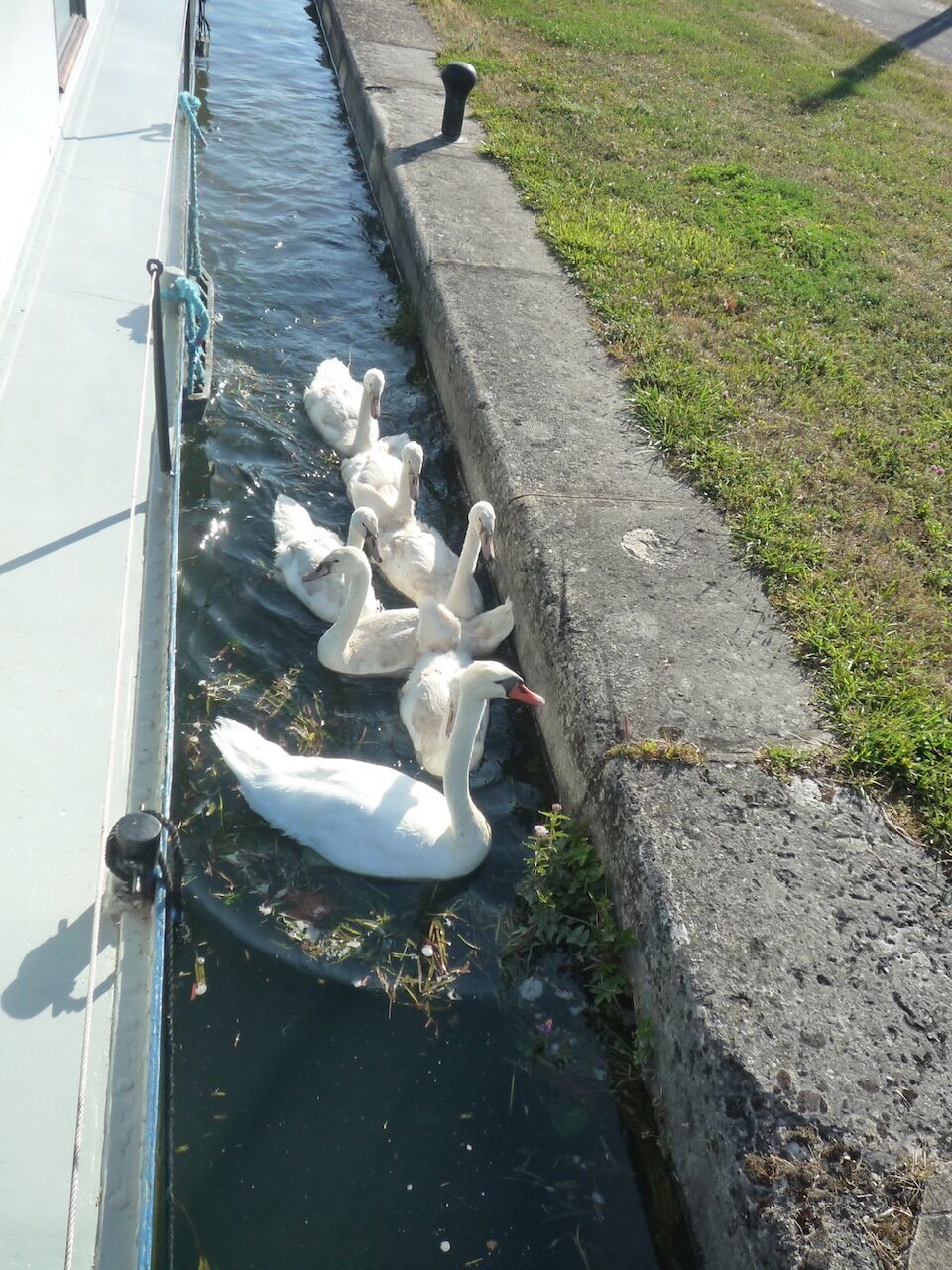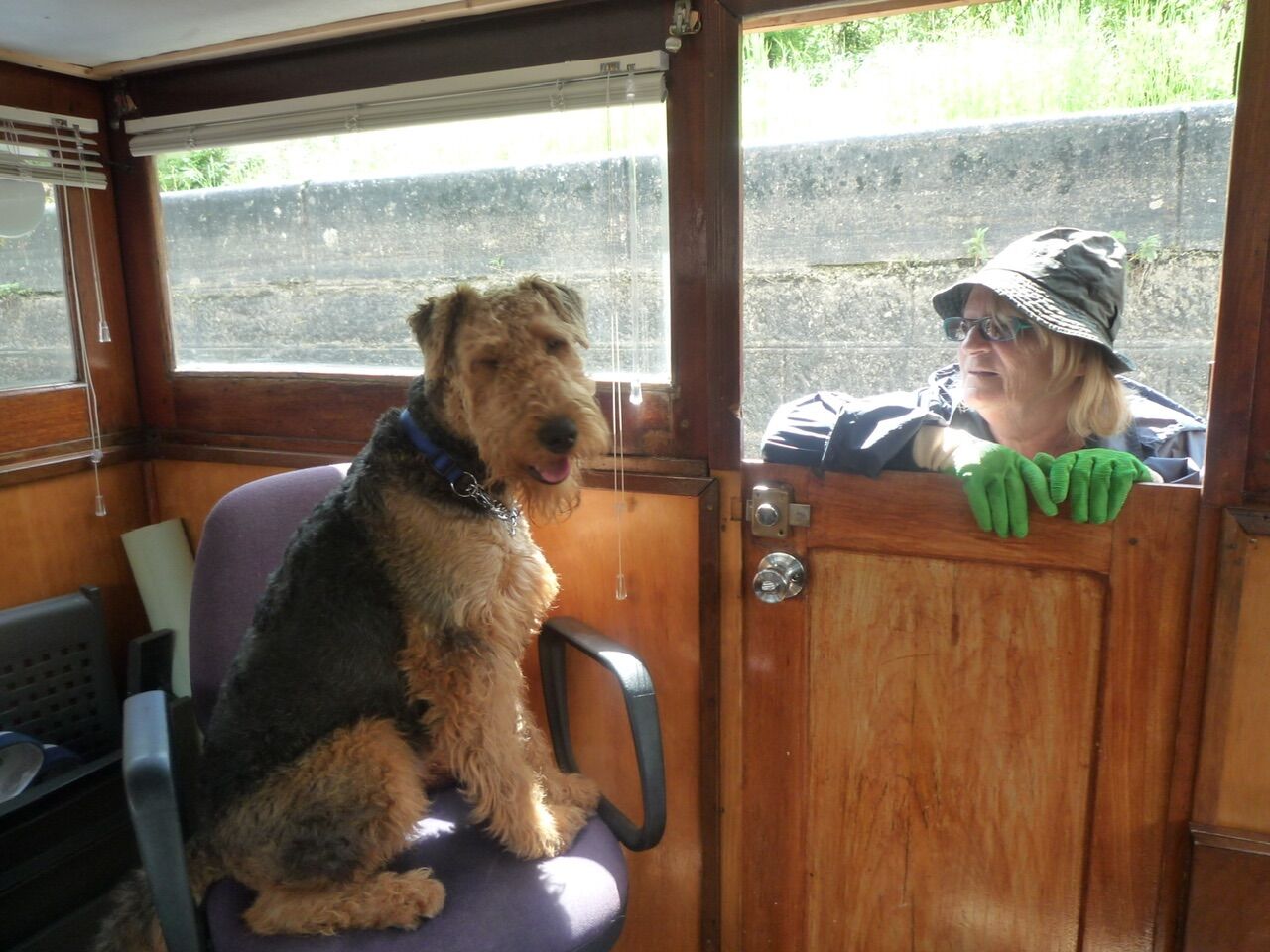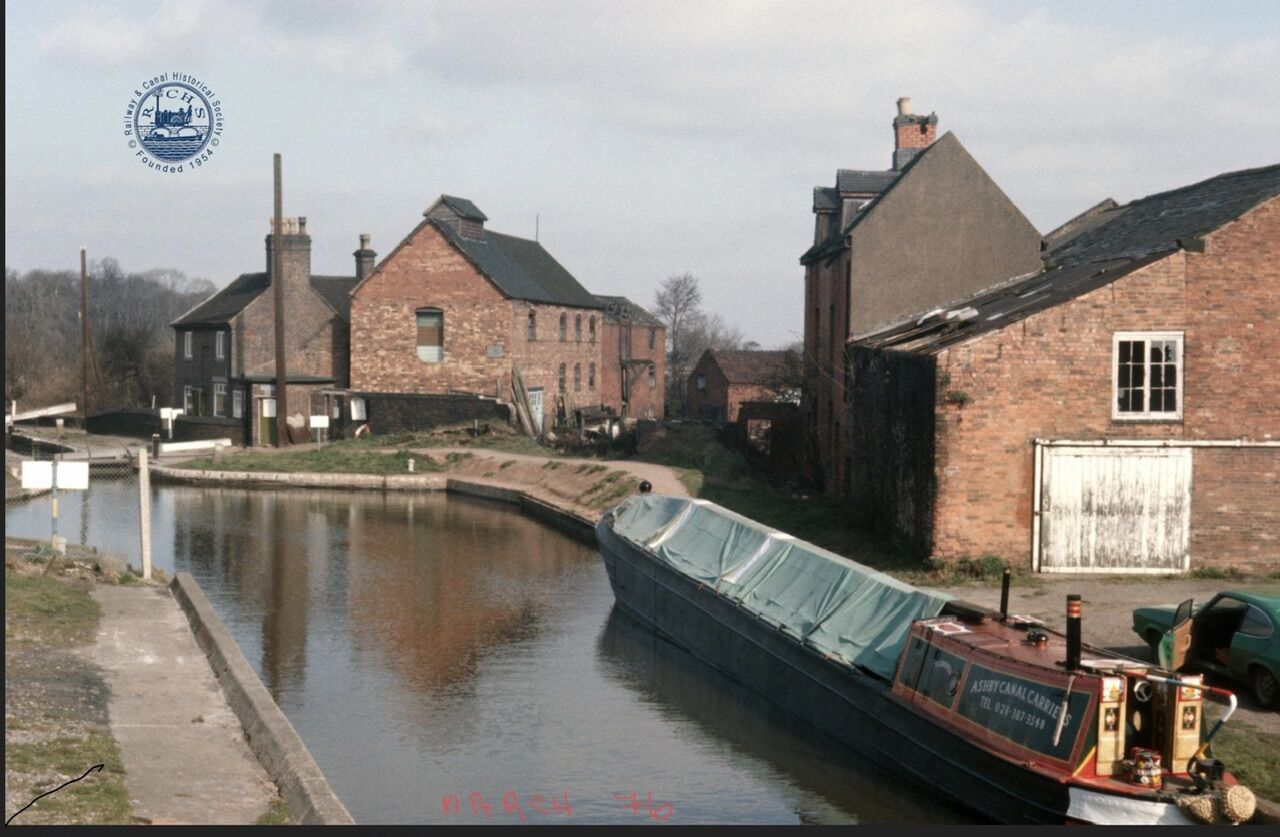-
Posts
1,466 -
Joined
-
Last visited
Content Type
Profiles
Forums
Events
Gallery
Blogs
Store
Posts posted by Dav and Pen
-
-
There were some Springer hulls which had Wooden cabins and were fitted out at Cosgrove in the middle 1960s think the company was called Faulkners but could be wrong. They got a lot of people afloat cheaply but were never a long term proposition.
-
Amazing to see boats we knew or owned way back in such shiny paint jobs which we never managed, strange to see Raymond at Braunston without Arthur . Great turn out all round.
-
 2
2
-
-
-
The majority of Narrow boats have dark or red painted roofs and are probably covered in solar panels, boxes, bags of coal, logs etc so there won’t be many who have tried watering the roof. We went from a red oxide painted narrow boat roof to a Dutch barge with a much bigger roof which was painted a darkish green. I changed this to a light grey as the temperature was often in the mid 30s in central france and I’m sure the colour helped lessen the heat gain in the accommodation I also painted the decks and gunwales the same as these could get unbearable hot. To try and keep the accommodation as cool as possible we kept all the curtains drawn (as is the custom in hot countries) and a fan running. When it got to hot we tried to moor in the shade and sit outside the boat. Our dog used to like laying on the gunwales on the shady side but on a bendy river or canal the shady side kept changing until he got peed off with moving and went downstairs to lay on the Lino floor in the galley.
-
 1
1
-
-
I confess to being out of touch with the current regulations but years ago the lace plate restaurant boat which worked out of Braunston only catered for max 12 persons as did all the camping boats thus avoiding the need for more stringent regulations and inspections by the then board of trade now presumably the dept of environment or the mca.
-
Besides the fender set up that boat doesn’t appear to have much draught although they have tried to disguise it with the coloured bands and as for the egg whisk prop.
-
 2
2
-
-
The Dutch barge I brought in Belgium had concrete ballast. The barge was built in 1917 and the build was 5.5mm steel, it was converted to a pleasure boat in 1985 when the concrete was put in. At the time this was very common and the inside of the hull was covered in what they called bilge grease a very thick black grease and the concrete was poured on top, looking at it from the top it appeared to be well compacted and not a large aggregate mix. They left a hole against the rear bulkhead for a bilge pump.
We had the boat surveyed before purchase and the expert was not worried about the concrete and some of the bottom was still above 4mm after70 years. During our ownership we had some doubling done and the shipyard was used to working on boats with concrete ballast and knew how to proceed.
In my former life I owned a precast concrete company and amongst our products we made pre stressed bridge beams and all the beams for west ferry circus at Canary Wharf. To lessen the problem of the so called concrete cancer the mixes were designed to be as low alkaline as possible which involved cement from a certain plant, large aggregate from the Trent valley but the local sand was ok.
We also made paving slabs using granite and the manufacturing method made them very dense and they would absorb very little moisture once fully cured. Many of you with paving ballast in boats from the 70s to 95 could well have our product.-
 1
1
-
-
Stop house is to Let
-
 1
1
-
-
Nothing new about this, so many boaters cut of the bends instead of keeping to the outside thus moving silt into the channel which has been established over many years by the working boats of the past and present. I see no reason why a 2 foot deep boat should go aground in the channel unless the pound is very low.
-
 1
1
-
-
-
We had a whole family in a lock with us on The Burgundy canal luckily the lock is 5m wide and we are just over 4.1m. The effect of being pulled together by passing boats is well known especially in shallow waters and a mistake new comers make is to go into neutral instead of keeping in slow ahead. There is actually a name for this effect but I can’t remember it (like a lot of other things) and it caused a big accident on the R. Plate when I was first at sea.
-
-
-
17 hours ago, Steilsteven said:
I find the thought of buying a boat in this country and parting with huge amounts of money to be thoroughly scary since buying Petra in the Netherlands and how secure it was there.
Over there buying a boat is much like buying a house as boats are registered with the land registry, and like buying a house the sale requires both parties to employ a notary. Both parties have to provide proof of identity and, once checks have been carried out, a deed is produced. The deed is forwarded to the Kadaster ( land registry ) who then forwards a registration certificate to the new owner and the previous owner's details are removed from the registry.The notary handles the deposit and final payment.
Keith
This is how we brought our barge in Belgium. It’s seems that following this thread and other on here that proof of boat ownership or of it being free of debt is a minefield and surely it is time for a registration scheme but not SSR as this is very loose with no checks. The monetary value of quite humble narrow boats certainly makes it open to scammers especially with the people desperate to find somewhere to live who have zero knowledge apart from watching some U tube channel. Over 60 years we brought 3 nbs and had one built, the one from British Waterways came with no paperwork except a receipt and likewise the one from Willow Wren but it was fair to assume they owned them the private one was well known and had been in the same ownership for years.
The barge in Belgium was the only one we had a survey on as it was 80 years old and had obviously been a bit neglected as well as having little knowledge of these craft. The surveyor found some thin places and the need for a new shaft and bearings which the owner (as per the contract) has the option of putting right or we had the option of pulling out with our deposit returned. The owner had some of the work put right and a sum was deducted from the final payment for the other bits to be put right later.-
 1
1
-
-
- Popular Post
- Popular Post
As someone who is no longer on the water due I’m afraid to poor health I do still take an interest and look over every bridge and have short walks along the towpaths. There’s really nothing new about the backlog of maintenance on the canal network, when I was on the IWA council in the mid 70s it was then estimated at £60 million and it was obvious that boat licenses and the freight traffic etc could not raise this amount. The then management sold as much of the family silver as they could but there was never enough. We tried to evaluate the impact of the system on its value to the areas they pass through, direct jobs and the ancillary jobs in the like of boat building and repair and supply. I can’t remember the figures we arrived at but it was a considerable amount which made no direct contribution but which paid taxes.
Over the intervening years the system has got much busier and the recent growth in liveaboards has changed the picture entirely and I would guess that the majority of boats are basically non movers and this trend seems to be increasing . These users present a different problem with regard to maintenance and services but they have a cost.
With regard to closing parts of the system my dear friend Graham Palmer and other founders of WRG will come back and haunt them. Against opposition from Bwb, the unions, local authorities and even the local people lots of people came together to get stuck in and nice and muddy as well as campaigners and fund raisers forming specific canal restoration societies and their foresight and hard work resulted in the network we have now. These people were in the main not boat owners but could see the benefit of reopening and to shut down parts of it would presumably mean some ongoing expense as these are not natural watercourses but have become part of the drainage system over time.
When the Stratford canal was re opened the National Trust ran it for a while but really had no interest or expertise and gave it to Bwb but the upper Avon is still an independent waterway. Maybe that’s how any new restored waterways should proceed in the future and the restorers should become navigation authorities and no doubt their canals would soon be full of houseboats for which they could charge a decent rent.Unfortunately CRt have not generally endeared themselves to many of the users (their customers) but it needs a concerted lobbying effort of all the MPs who have any waterways in their area to put pressure on the government for more funds as they seem to find money when pressure is put on them.
-
 5
5
-
When these plates were first issued we said to Tony Grantham we don’t want to fix them to the cabin sides could we have the logo and numbers painted on. The answer was no only the plates could show the new numbers as distinct from the old registration number of the NB which in GU boats case was usually a Brentford one. We fixed them to the base of the cratch which was wood so no problem with drilling cabin sides.
-
Surely if you are having and paying for an out of water hull survey you would be present to watch the surveyor and talk to him about any problems. Never had anything to do with UK surveyors as only brought old working boats and it was possible to see the inside of the hull and bottom. The engine we took a chance on but had a good idea. When we brought the barge in Belgium there was a contract drawn up stating that the buyer would pay for the docking and survey and if all was good which meant hull plus 4mm the offer would be accepted, if the survey threw up big problems the buyer could walk away and the 10% deposit (held by the broker) would be returned. The alternative was for the seller to pay for the faults to be put right which was the case in our purchase. The surveyors are real professionals and the one we used to buy and also through our ownership for the 7 yearly insurance surveys was Lloyd’s registered.
-
Shared a lock on the Thames with a salters steamer full of the Thames conservators all in blazers and yachting hats. Very interested in our dirty old coal boat but also encouraging in our business and in fact a bit later we got the contract to supply the lock houses. They had the best interest of the river as their only concern and between them had real knowledge.
All the work on the Nene after the 47 floods was carried out by the Nene Drainage Board one of whose member was the chief engineer of the Northampton Brewery Company who later was mayor of Northampton.
All these bodies had an interest in the area they worked and lived in unlike the present day set up run by collage kids in a remote office .With regard to through toilets on the continent I’m afraid these are most common apart from Holland as there is almost no infrastructure for elsans or pump outs.
-
 1
1
-
-
3 hours ago, Athy said:
Rothen's which was there until only a few years ago, by which time it must have been one of the last working coal wharves on the canals.
This was long before Rothens had the wharf. It belonged to BWB and Ashby Canal Transport paid a small fee to load over it.
-
 1
1
-
-
-
I’ve been in touch with Judy and she confirms that the stool in the query is by her and it’s early as she changed to s darker green..
-
Our PD2s both had the spiral on the hand start which allowed you to put the decompressor levers over held by a bar attached to a small wheel that when you turned the handle slowly moved along the spiral until the decompressors fell . Sorry not a good description but it meant you could keep winding. Personally I nearly always failed to hand start them but Ted Ward never did. Ted had some wonderful terminology for the engine parts one of which was “splunger” which was always the cause of a mystery breakdown. Not sure of the reasons for the cranks breaking but ours did whilst ticking over in the top lock at Atherstone but it still got back to Braunston. As we were running camping boats decided to change it for a PJ3 from a trinity house generator which had only done 4 hours and 40 years later it’s still in the boat which has had 3 owners since .
-
Narrow boats do roll as we found out on Lough Alan in Ireland where a wind had blown up waves at 90 degrees to our route. We were once moored at Soisons with our barge and a small narrow boat was also there, every time a commercial went past it really rolled frightening the owner who jumped ashore.
-
2 hours ago, matty40s said:
Currently receiving 30 trucks full of concrete a day in the Stockton area, which is why no-one else can source concrete easily.
If they dont use all the trucks, it is just dumped in an ever growing mountain behind the works.
At chipping warden there’s a large batching plant in the compound but the concrete units to make the cut and cover tunnel seem to have stopped being placed. When I drove a truck mixer any left over concrete was sold to the local farmers who always had a use for it. Not allowed to do that now apparently so tipped in the quarry or some where handy.











Tonic required. Send in your photos of what is nice on the waterways now.
in General Boating
Posted
This day in 2009 stopped in a flood at St Jean de Losne with our barge looking quite small. We had tied alongside Floan when the other 2 arrived.